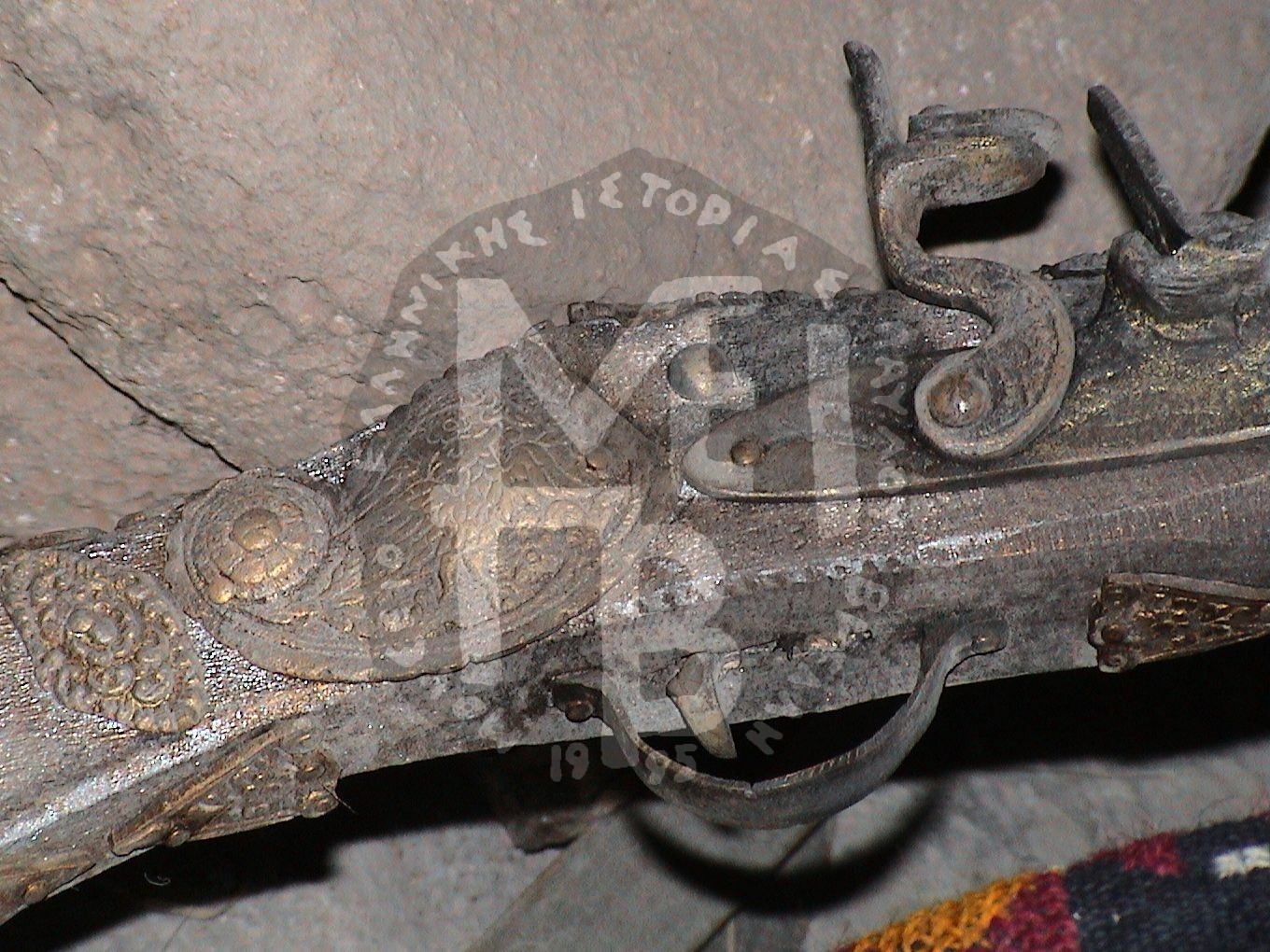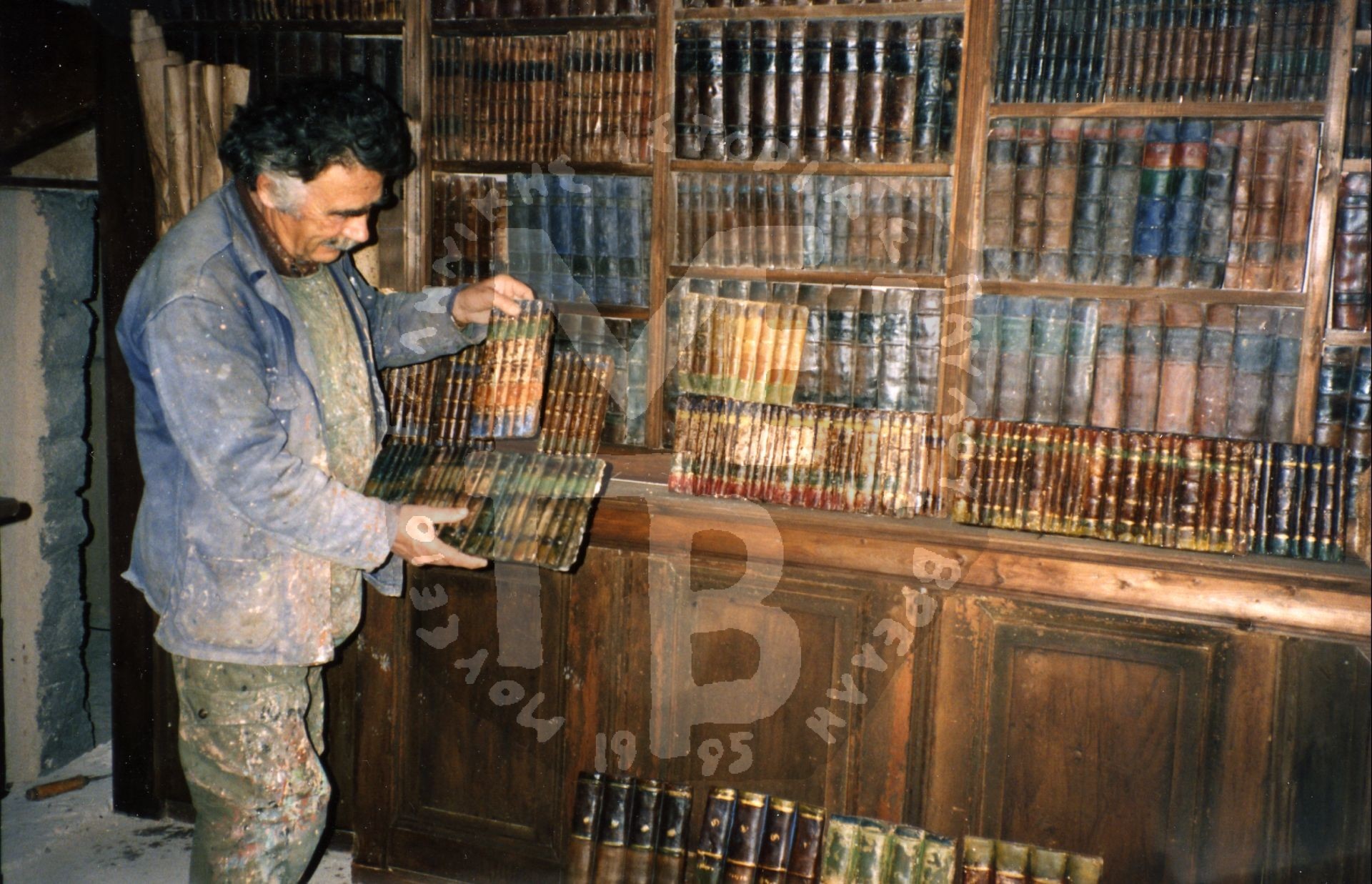General Information about the Interior
General information for the visitor of the interior, from the artist himself:
«I work the faces with clay first – typical, sculpt work. The procedure does not particularly trouble me when I have sufficient sources about my themes, ‘the Lady of Ro’ for example. I find it difficult, though, to breathe life into faces the references to which are few or scarce – regarding Dionysus the philosopher, I had virtually just a sketch. I pay particular attention to osteology (bone structure), myology (muscle and ligament structure), and physiology when shaping my figures. The study of human character, physiognomics and mimic art help me more when attributing sentiments. Then, I create a negative plaster mould in which I later cast wax. All faces, arms and legs are made of pure beeswax.
Most of the hair is synthetic but some is natural. The hairs are fixed on the wax, one by one, with the appropriate coloring in the insertion.
The eyes of the wax effigies are the ordinary glass eyes sold in certain optician’s. They are meant to replace the natural eyes of people who have lost their vision.
The clothes are of the present day, altered, old pieces, worn remnants or parts of old outfits I bought from second-hand shops in different towns and cities. Others are donations from friends or acquaintances. I worked on them, altering them or repairing them with care. Regarding certain costumes, like the one of Pavlos Melas, I was assisted by friends who fabricated certain parts I asked them to.
The bodies are made of plaster and sackcloth, or matting, or flax, or wood shavings, and the skeletons of fine iron rods. I bend the iron rods myself and give the body the position I want.
The stones, of different color, size and shape, were chosen and built with my own hands. I carried them in my car, in ones or twos. I faced walls with them, I paved mule tracks and paths and I rendered rocks.
Whatever the visitor touches is cement mortar or cement which I sculpted when it was still fresh. On other occasions I used cement mortar on hard spots. Such a procedure was not only difficult, but it had to finish in due time, before the mixture got stiff. For instance, see the room of Ali pasha’s slaughter with conglomerate rocks.
The rocks, the visitor cannot touch and have striking creasing are made of sackcloth, glues, colors and plaster. Before dipping the sackcloth into the mixture, I planned ahead by placing iron laminations which I embodied in the building itself. Immediately afterwards, I spread the sackcloth and shaped it the way I wanted. Last but not least came …
The patina, which I used both in this kind of rocks and all the other rocks and walls. I work the colors according to the hues I desire, so as to render the atmosphere of the theme on each occasion. On rocks found in prisons or moldy caves, I use extra varnish in order to convey the sense of dampness the natural place would have. Other materials, such as brown cassia, are used when I want objects to look older.
Wood (big and small), doors, windows, ironworks, bookcases, cupboards and so on come from old, demolished houses in Ioannina and I gathered them piece by piece, or picked them on the spot. The ironwork of the prisons –made from thick iron of 20mmtr– which I made with the help of an experienced blacksmith in his workshop is the exception.
Leaves, grass, rods and dead branches were picked up from places whose climate and altitude are similar to those of my themes. I made sure to dry them and preserve them in conditions adapted to the real ones. Elsewhere, in compositions like those related to the Revolution of 1821, I selectively placed some flowers, with the intention to make an allusion to the season (spring) during which the events took place.
Objects like lanterns, old small chests, flasks, books, inkpots, lamps, pitchers, plates, hand mills and other odds and ends are from my old paternal home in Ioannina. The rest (ironworks, chains, bells, storage barrels, oil lamps, butter beaters, etc.) have been bought at second-hand shops, all over Greece, some of them being donated by friends and acquaintances.
Many compositions were based on the use of neuro-metal, in terms of construction. Compositions like ‘Asia Minor’, ‘Cyprus’, ‘Lady of Ro’ and parts of ‘Women of Pindos’, were based exclusively on the use of this material. I used just cement with some sand as a coating.
The flintlocks, about 45 in total, were made of beech wood, round and curved sheet-metal tubes, as well as fine and thick brass plates. I then added some ornamental elements based on folk drawings and some functional ones, such as hammers and triggers, which I molded. On top of these, I drew patterns by means of metal oxidization (“Savvat” technique). I worked on them based on drawings, models and descriptions I compiled from my bibliography, as well as photographs I took from several museums or other sources. I constructed everything in my workshop in Ioannina with the help of my young at the time son, Kostas. By the way, this type of guns got their name from their trading house in Venice, which was ‘Cario e figlio’.
I made the ‘tsarouhia’ (shoes with a pompon) both of the Turks and the Turk-Albanians, of Kosmas Etolos and of some other effigies, myself. I mostly used sackcloth, gauze, plaster and glues. After giving them form and shape and while still damp, I added colors.
The cannon in the composition of ‘mountain artillery’ was donated by the 8th Division. The Army Ordnance Corps gave away invaluable objects. The wirelesses, the machine gun, the grenades, the guns and ammunition of ‘the battle of Crete’, the objects in the cave of “Kalpaki’ are just a few of the items donated.
As regards the over 1,250 books in the bookcases of ‘The teachers of the Nation’, only the spines can be seen. Firstly, I carved in moulds groups of books, always based on the authentic ones, and then I molded gypsum inside. On their back, I added fibres, flax and sometimes cloth. After using the proper patina over the gypsum front, so that they give the impression of leather volumes, I painted them carefully to give them character.
The fruits seen in several themes were made with clay, gypsum and certain colors (temperas). All this was done from 1945 onwards, before I was admitted in the School of Fine Arts. One of the first commissions I carried out with responsibility and under my own name was that on behalf of the Agronomic Department of Athens University. In order to provide samples of fruit for the study of their diseases –which I ‘painted’ on them–, I worked closely with professors in charge and created the whole series I had been asked to. As far as I am concerned, these are pieces which bring back to memory hours of work dear to me. Moreover, that commission was a demanding test, in terms of resourcefulness, regarding both the materials and the delicate nature of the work for each and every one of them.»


